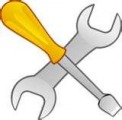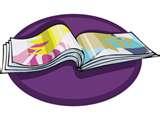About Citation Tools: Getting Started
Introduction
In the previous section we looked at the practice of citation analysis: tracking the number of times, and in what specific publications, an article has been cited by other researchers. We saw that citation analysis had some role, although controversial, in the evaluation of research publications.
Citation information can also be useful in literature searching, to find related articles either in a bibliography, or by looking at those who have cited a paper of interest to observe the direction of an area of research. It is also possible to locate the most highly cited papers on a topic.
In the previous section we looked at the practice of citation analysis: tracking the number of times, and in what specific publications, an article has been cited by other researchers. We saw that citation analysis had some role, although controversial, in the evaluation of research publications.
Citation information can also be useful in literature searching, to find related articles either in a bibliography, or by looking at those who have cited a paper of interest to observe the direction of an area of research. It is also possible to locate the most highly cited papers on a topic.
Citation data comes from several sources. Many of these are online databases that track and connect published articles with articles in bibliographies. The major citation database, Web of Science, has been around for over 40 years. Only recently have other databases and web sites begun to track citations.
In this unit we will learn about two major citation databases: Web of Science and Google Scholar, and emerging data sources such as disciplinary databases and journal publisher web sites. Each source has its strengths and weaknesses in terms of content and search features.
Citation data is contained in many different sources, and to perform a citation analysis that is as thorough as possible, requires using all available citation resources.
Objectives
- Describe a citation database and how it is different from traditional literature databases. Discuss a limitation common to all citation tools.
- List and briefly describe four major types of citation data tools, and locate and access an example of each resource on the library web site.
- Describe, characterize, and compare and contrast two major citation databases: Web of Science or Science/Social Science Citation Index and Google Scholar For each database: describe its content, its history/strength/significance, and its limitations.
- Describe studies investigating how well education journals are covered in these two databases and implications for citation analysis.
- List, describe, and provide relevant examples of new or emerging types of citation databases and web sites: traditional disciplinary databases and publisher web sites.
- Describe the limitations of citation databases. And what this means for practicing citation analysis
Before you begin...
Make sure that you have reviewed the unit on Citation Analysis so that you have some understanding of why citation tools are important.
Make sure that you have reviewed the unit on Citation Analysis so that you have some understanding of why citation tools are important.


